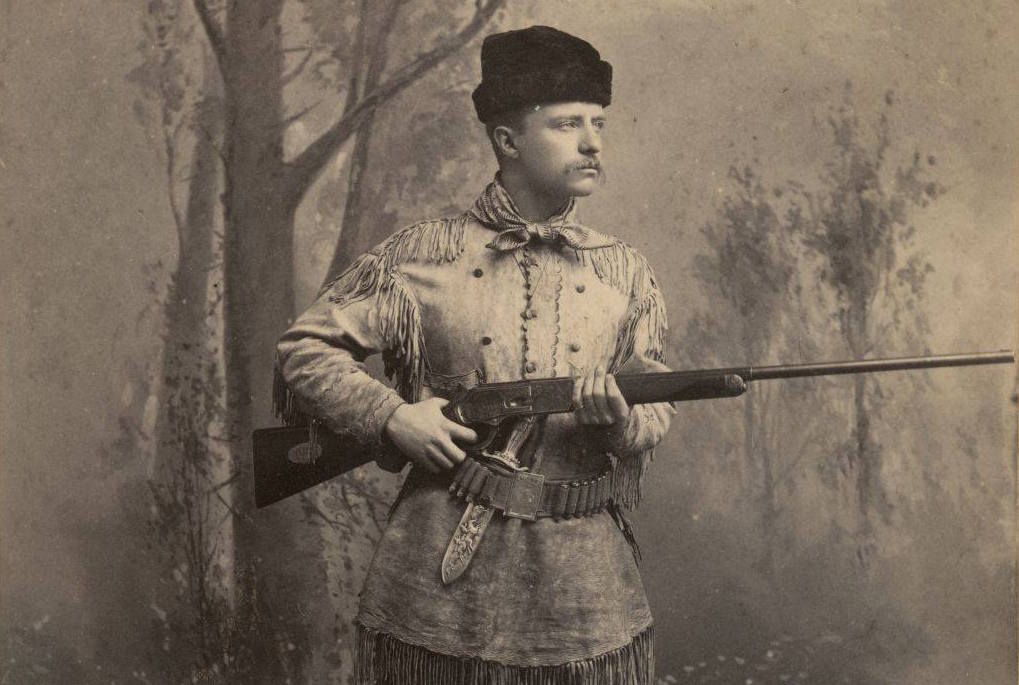Readers of Sporting Classics and Sporting Classics Daily know that Theodore Roosevelt was a man of many, many hats. There was Roosevelt the hunter. Roosevelt the soldier. Roosevelt the President, the writer, the conservationist, the police commissioner. But did you know he was also a staunch supporter of the National Rifle Association? Or that he was a Life Member?
Documents from the Library of Congress, included in the Theodore Roosevelt Center at Dickinson State University, show the love Roosevelt had for one of America’s most important institutions. These letters between Roosevelt and then NRA President General James Andrew Drain highlight the NRA’s importance, both then and now.
The two men began exchanging letters in 1901 when Roosevelt was William McKinley’s vice president. Drain and Roosevelt met several times to discuss the Washington State National Guard, which Drain was busy equipping as the state’s adjunct general. The two stayed close over the next few years, with Roosevelt congratulating Drain on the birth of his son and Drain coming close to a position in Roosevelt’s White House.
On February 16, 1907, deep into Roosevelt’s second presidential term, Drain wrote the President to expound upon the NRA’s mission, as the two had already discussed the organization at some length in a meeting on February 9. Drain wrote:
“The object of this organization shall be to encourage marksmanship throughout the United States, particularly in the direction of qualifying as finished marksmen those individuals who may be called upon to serve in time of war; to encourage competition in marksmanship between teams and individuals; to encourage legislation for the establishment and maintenance of ranges; to secure the issue of military rifles and ammunition to those practicing thereat; and to create a public sentiment in respect to the necessity of rifle practice as a means of national defense.”
Roosevelt, himself a former soldier, was obviously intrigued by the idea of better training the nation’s troops before war broke out. He penned a response on February 18, throwing himself fully into NRA support.
“I am so heartily interested in the success of the National Rifle Association of America and its work done in cooperation with the National Board for the encouragement of Rifle Practice*, that I take pleasure in sending you herewith my check for $25 for life membership therein.”
Drain’s response arrived at the White House a few weeks later:
“I take great pleasure in handing you herewith a Life Member’s badge of the National Rifle Association of America, and also a receipt from the Treasurer of the Association for your membership fee.”
Not satisfied with a monetary donation, Roosevelt did, indeed, take a hearty interest in the NRA. In another letter, Roosevelt authorized Drain to use his new Life Membership status as a publicity tool for the NRA, which Drain set about to do with Roosevelt’s presidential secretary, William Loeb Jr.
Drain asked Loeb for help distributing the news directly from the White House in order to give it more gravitas, but he also asked for Loeb to set up a meeting between he and the Associated Press’s general manager, Melville E. Stone.
The idea of going to the AP in order to further the NRA’s cause is, shall we say, a quaint notion when seen through the lens of 2016 America.
“I believe if I could go to Mr. Stone, of the Associated Press, in the right way, I could get him to give the item considerable space,” Drain wrote to Loeb. “My experience has led me to believe that newspaper men will do always about the right thing, if they are approached in the right way and understand.”
Quaint.
Roosevelt and Drain continued to correspond for at least ten more years, with Roosevelt reading Drain’s account of his Scottish hunting adventures, Stories of Some Shoots, or the Chronicles of a Gratified Gunner. Roosevelt once introduced Drain to Gifford Pinchot, the first chief of the U.S. Forest Service, as someone who “has done more than any other man to help rifle shooting in the National Guard and among citizens.”
Their shared dream of a successful NRA lives on today, decades after two of its champions went the way of the grave. Men like Wayne LaPierre and Chris Cox carry on their tradition and continue to do the NRA’s “work of high value to the country,” as Roosevelt put it.
Following in Their Footsteps
The National Rifle Association of America is the oldest civil rights group in the United States, having been formed in 1871 and continuously operating ever since. Seven other U.S. presidents have also been NRA members: Ulysses S. Grant, William Howard Taft, Dwight D. Eisenhower, John F. Kennedy, Richard M. Nixon, Ronald Reagan, and George H.W. Bush. In 2013 there were 5 million members, each working to expand and protect the rights of the other 316 million citizens.
You were given the Second Amendment by the Founding Fathers; you still have it because of the NRA. Join today or regret it tomorrow!
“In a moment of decision, the best thing you can do is the right thing to do, the next best thing is the wrong thing, and the worst thing you can do is nothing.”
— Theodore Roosevelt
Note: The board Roosevelt referred to was officially called the National Board for Promotion of Rifle Practice. Created by an amendment to the War Department Appropriations Bill in 1903, the program is the predecessor of today’s Corporation for the Promotion of Rifle Practice and Firearms Safety, Inc., the governing body of the Civilian Marksmanship Program.

